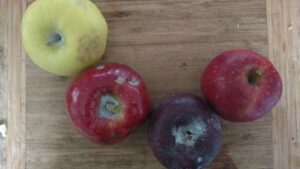 If you are like more than 50% of Americans you took one or more dietary supplements today. The use of dietary supplements has been increasing over the past 20 years. What you once could only find in health food stores is now available in drug stores and grocery stores. It has even become common for conventionally trained medical doctors to recommend multivitamins, fish oil, probiotics and vitamin D. Most of the patients that I work with are taking multiple supplements before I start working with them.
If you are like more than 50% of Americans you took one or more dietary supplements today. The use of dietary supplements has been increasing over the past 20 years. What you once could only find in health food stores is now available in drug stores and grocery stores. It has even become common for conventionally trained medical doctors to recommend multivitamins, fish oil, probiotics and vitamin D. Most of the patients that I work with are taking multiple supplements before I start working with them.
While I recommend dietary supplements to many of my patients I do have concerns about the safety, interactions, and quality of dietary supplements. I will be addressing safety and interactions in future blogs, but in this blog I want to focus on quality issues with dietary supplements.
A quality evaluation by the company Consumer Labs found that 20% of the vitamin D products that they tested failed their quality testing. Two products contained almost twice as much vitamin D as was listed on the label, once product contained unacceptable levels of lead, and two products did not disintegrate within the expected 30 minutes. A popular national grocery store chains calcium with vitamin D product contained 175% of the amount of vitamin D on the label and still had not disintegrated after an hour. So while you might save a little money on buying the grocery store brand calcium and vitamin D if it doesn’t break down in your digestive tract you might as well be throwing your money away.
In another evaluation Consumer Labs found that 16 of 42 multivitamins tested either had less of a nutrient or nutrients than the label stated, had more of a nutrient or nutrient than the label stated, or didn’t dissolve under normal circumstances. While the benefits of taking a multivitamin can be debated, if you are taking a multivitamin it would be good to know that it contains the amounts listed on the label and also that it is going to dissolve in your stomach as opposed to in the sewer.
Several years ago an analysis of Ayurvedic herbal products purchased from health food stores in the Boston area found that over 20% of them contained dangerous levels of lead, mercury, and arsenic. While the amounts in a single pill were not enough to cause a problem, if you were taking them every day for months, the toxic exposure could begin to have serious health consequences.
A study done at my alma mater Bastyr University looking at the quality of probiotic supplements found that only one product out of twenty contained exactly what the label claimed it to contain. 30% of the products were contaminated with other organisms not listed on the label and 20% had no growth of any bacteria.
These examples unfortunately are just the tip of the iceberg. Other issues have included adulteration with anabolic steroids, high levels of toxic solvent residues, failure to contain the herb species listed on the label, and inclusion of rancid oils.
While I have a great appreciation for dietary supplements, it has become clear to me that there is a great deal of variability in the quality of products sold as dietary supplements in the United States. While there has been an increased effort by the FDA to enforce basic quality standards, the supplement industry remains largely under regulated. The FDA does now require supplement companies to follow specific good manufacturing practices (GMP) in regards to the manufacturing of the product, but there is not the infrastructure to adequately enforce these and even if they did there is concern that the FDA standards may not be adequate enough to ensure that supplements are safe, free of contaminants and contain the substances that the label says that they do. The GMPs also don’t regulate the effectiveness of the product, the forms of the ingredients, where the herbs and nutraceuticals come from, or whether or not the additives or fillers used might have negative effects.
Fortunately there are some companies that have taken it upon themselves to make sure that they are producing high quality products. These companies not only follow the FDA regulations, they go beyond these standards to ensure that when you buy one of their products it contains the ingredients they say they do, in the amounts listed on the label and have been tested to make sure that they do not contain heavy metals, rancid oils, microbes, pesticide residues, solvents, or pharmaceutical drugs.
Buying dietary supplements through large online retailers can seem like a convenient and cost saving method. Unfortunately there have been numerous recent reports of counterfeit supplements being sold on Amazon including fake products made to look like products by the popular supplement companies NOW and Host Defense.
To make sure that my patients have access to high quality dietary supplements that they can trust I have partnered with the online dispensary Fullscript. Fullscript carries supplements by companies that adhere to the highest quality standards and makes sure that the products products that have been meticulously selected and monitored, stored, and shipped with care. For more information about Fullscript’s quality practices, click here.
If you have not yet signed up with Fullscript, click here to get started.
So the next time you are tempted to buy that cheap bottle of vitamins remember that you may be getting more (or far less) than you paid for!






